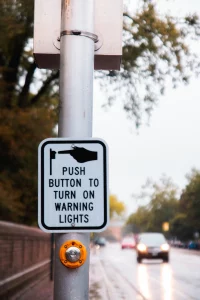Understanding Your Car’s Warning Lights


Understanding Your Car’s Warning Lights


Introduction
Modern cars are equipped with a variety of warning lights on the dashboard to alert drivers to potential issues or malfunctions. These warning lights are crucial for maintaining the safety and performance of your vehicle. However, deciphering the meaning behind each light can be confusing if you’re not familiar with them. In this article, we will guide you through the most common warning lights found in cars, explaining their meanings and providing steps on what to do when they illuminate.
1. Check Engine Light
Meaning
The check engine light, often represented by an engine-shaped icon, is one of the most important warning lights. It indicates a potential issue with the engine or its related components. The specific problem can range from a loose gas cap to a more serious engine malfunction.
What to Do
- Check gas cap: If the check engine light comes on, start by checking the gas cap. Ensure that it is properly tightened. A loose or faulty gas cap can trigger the light.
- Monitor performance: Pay attention to the car’s performance. If you notice any unusual behavior, such as rough idling, reduced power, or strange noises, it’s best to have the vehicle inspected by a qualified mechanic.
- Check for other warning lights: If other warning lights accompany the check engine light, it’s crucial to address those issues as well.
2. Battery/Charging System Warning Light
Meaning
The battery/charging system warning light, often shaped like a battery or with the word “ALT” or “GEN,” indicates a problem with the vehicle’s electrical charging system. This could be due to a failing alternator, loose or damaged belts, or a weak battery.
What to Do
- Avoid using unnecessary electrical components: To conserve power, reduce the use of non-essential electrical components such as the radio, air conditioning, or headlights.
- Check battery terminals: Inspect the battery terminals for corrosion or loose connections. Clean and tighten them if necessary.
- Monitor battery voltage: Use a voltmeter to check the battery voltage. If it’s below the recommended range, have the battery and charging system tested by a professional.
3. Oil Pressure Warning Light
Meaning
The oil pressure warning light, typically shaped like an oil can or an oil lamp, indicates low oil pressure in the engine. Low oil pressure can lead to engine damage if not addressed promptly.
What to Do
- Check oil level: Stop the vehicle in a safe location and check the engine oil level using the dipstick. If the oil level is low, add oil as needed.
- Inspect for leaks: Look for any signs of oil leaks under the car or in the engine compartment. Leaks can cause low oil pressure.
- Do not ignore the light: If the light remains illuminated, even after checking the oil level and ensuring there are no leaks, it’s important to have the vehicle inspected by a mechanic to avoid potential engine damage.
4. Tire Pressure Monitoring System (TPMS) Warning Light
Meaning
The TPMS warning light, usually depicted as an exclamation mark inside a tire, indicates that one or more tires have low pressure. It is a safety feature that helps maintain proper tire inflation and prevent potential tire failures.
What to Do
- Check tire pressure: Park the car in a safe location and use a tire pressure gauge to check the pressure in all four tires, including the spare tire. Inflate any tires with low pressure to the recommended levels.
- Inspect for punctures or damage: Inspect the tires for any signs of punctures, nails, or cuts that could cause a leak.
- Reset the TPMS: Some vehicles require a manual reset of the TPMS after adjusting tire pressure. Consult your vehicle’s owner’s manual for instructions on how to reset the TPMS.
5. ABS (Anti-Lock Braking System) Warning Light
Meaning
The ABS warning light, often represented by the letters “ABS” inside a circle, indicates a problem with the vehicle’s anti-lock braking system. The ABS system helps prevent the wheels from locking up during sudden braking, improving control and stability.
What to Do
- Check brake fluid level: Ensure that the brake fluid level is within the recommended range. Low brake fluid can trigger the ABS warning light.
- Inspect ABS sensors: Check the ABS sensors for any visible damage or debris. Clean the sensors if necessary.
- Have the ABS system diagnosed: If the ABS warning light remains illuminated, it is advisable to have the ABS system diagnosed and repaired by a qualified technician.
6. Airbag Warning Light
Meaning
The airbag warning light, often represented by a seated passenger with an airbag deploying, indicates a potential problem with the vehicle’s airbag system. A malfunctioning airbag system may not deploy in the event of an accident, compromising occupant safety.
What to Do
- Check seatbelts: Ensure that all seatbelts are properly fastened and not twisted or damaged.
- Avoid placing objects on the passenger seat: Objects placed on the passenger seat may interfere with the airbag system. Remove any objects from the seat.
- Seek professional inspection: If the airbag warning light remains illuminated, have the vehicle inspected by a qualified technician to identify and rectify the issue.
Conclusion
Understanding your car’s warning lights is essential for maintaining your vehicle’s safety and performance. By knowing the meaning behind each light and following the recommended steps when they illuminate, you can address potential issues promptly and avoid further damage. Always consult your vehicle’s owner’s manual for specific instructions and contact a professional mechanic if you are unsure about any warning light or how to address the associated problem. Regular vehicle maintenance and inspections are also crucial for preventing warning lights from illuminating and ensuring the long-term reliability of your car.








